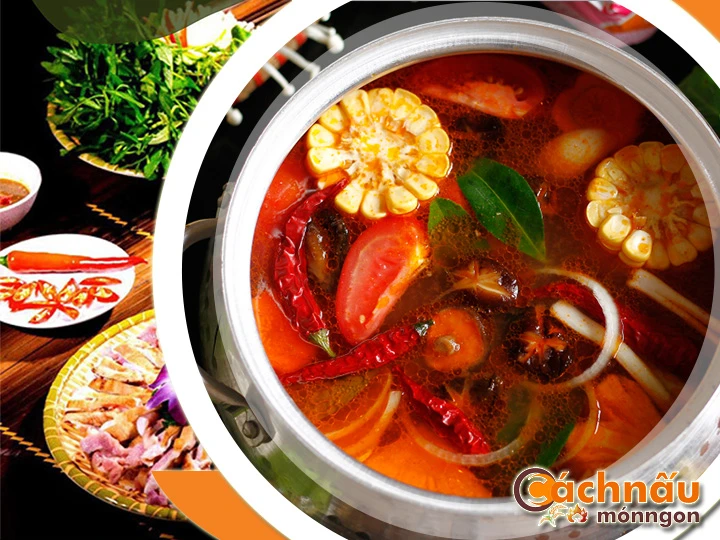Rabbit hot pot, a scrumptious and gastronomic treasure, has been treasured across diverse culinary traditions for centuries.
This comprehensive guide explores the complete picture you need to realize about rabbit hot pot, from its historical background to current adaptations, nutritional benefits, and methodical instructions for creating the flawless recipe at home. Whether you are a skilled chef or a inquisitive newcomer, this guide will support and train you to achieve expertise of rabbit hot pot.

DIVING INTO THE LEGACY IN ADDITION TO CULTURE ABOUT RABBIT HOT POT.
Rabbit hot pot is a special and time-honored dish with significant traditions in diverse locales. Its demand stems not only from its hearty flavor but also from its historical and cultural significance.
1. Understanding the Roots pertaining to Rabbit-inspired delicacy.
- Historical Roots: Hearty rabbit meal was created in agricultural regions where these animals were a abundant, protein-rich food source. In traditional Chinese culture, it was a beloved dish, particularly during festive times.
- Gaining Popularity: In European nations like Germany, rabbit was frequently added to hearty meals, becoming modern versions of rabbit stew as the dish was embraced globally.
2. Rabbit Hot Pot in East Asian Culture.
- Across China: Known as 兔肉火锅 (Tù ròu huǒguō), rabbit hot pot is an essential part of spicy Sichuan cuisine, renowned for its pungent flavors and commonly shared during family gatherings.
- Across Korea and Japan: While not as popular, rabbit hot pot is rarely created as a health-focused recipe in South Korea, or taking cues from nabemono hot pot in Japanese cuisine, blending with local produce and seasonings.
- In Vietnam: Although rabbit hot pot is not a common daily dish, it is recognized during important celebrations or in rural areas where rabbit meat is easily found. It is often flavored by distinctive spices such as fresh lemongrass, fresh ginger, and fiery chili, paired with fresh vegetables like morning glory, green mustard, or aquatic greens. This dish is enjoyed for its one-of-a-kind flavor and healthy attributes, frequently served at festive occasions with loved ones.
Ở Việt Nam, tuy không tính là món ăn thông dụng từng ngày, nhưng thường thấy trong các dịp đặc biệt hoặc ở những nơi hẻo lánh, nơi nguồn thịt thỏ phong phú. Thường được tẩm ướp với mùi thơm từ sả, gừng tươi, và ớt đỏ, kết hợp với rau muống. Món ăn này nổi bật trong các bữa tiệc nhờ hương vị không trộn lẫn và lợi ích sức khỏe, thường xuất hiện phổ biến ở.
3. Hearty Rabbit Meal integral to European Gastronomy.
- France: Traditionally served as a robust stew with red wine sauce, seasoning herbs like rosemary, and root vegetables. Rabbit hot pot is a time-honored dish for holiday meals.
- Italy: The dish known as “Cacciatore”, featuring rabbit stewed in tomato and wine sauce, is a historical predecessor of hot pot-style rabbit dishes.
MASTERING RABBIT HOT POT: RECIPES AND METHODS
Rabbit hot pot is a flexible dish that merges seasonal ingredients, aromatic broths, and unique cooking techniques to create a rich and flavorful experience. Below are essential tips into the key recipes and strategies to master rabbit hot pot.
Essential Recipe for Rabbit Hot Pot
* Required Ingredients:
- 1 whole rabbit (cut into pieces)
- 4 cups of broth (chicken)
- Vegetables (bok choy)
- Spices and herbs (thyme)
- Seasonings (salt)
- Optional: side dishes for serving
* Cooking Instructions:
- Getting the Rabbit Ready: Rinse and chop the rabbit into pieces. Marinate with a pinch of salt, pepper, and a splash of soy sauce for half an hour to enrich the flavor.
- Create the Broth: Heat a vessel with a touch of oil. Cook garlic and ginger until fragrant. Add your choice of broth and bring it to a simmer.
- Simmer the Rabbit: Add the rabbit pieces into the pot and let them cook slowly on a low flame for 30-40 minutes until soft.
- Add Vegetables: Add your selected vegetables and cook until they are tender but still fresh-looking.
- Present: Transfer the hot pot to a portable stove. Serve with dipping sauces and add-ons such as rice or noodles.
Key Techniques for Cooking Rabbit Hot Pot
- Seasoning:
. Marinate the rabbit with a combination of salt, pepper, and seasonings to enhance its base flavor.
. For more depth, use wine, soy sauce, or a mix of fresh herbs like rosemary and thyme.
- Building Layers of Flavor:
. Start by boiling the rabbit in the broth to extract its rich flavor.
. Introduce vegetables step by step based on their texture needs.
- Perfect Timing:
. Avoid overcooking the rabbit, as it can become tough.
. Test for doneness by checking if the meat easily separates from the bone.
- Flavor Enhancements:
. Perfect the flavor by adding more spices as needed.
. Experiment with different flavor profiles, such as herbal-infused variations.
Tips for Success
- Fresh Ingredients: Always choose locally sourced rabbit and farm-fresh produce for the highest quality.
- Taste and Adjust: Be aware of the saltiness in the broth. Taste and refine frequently during cooking.
- Creative Accompaniments: Offer a variety of sauces like garlic-chili oil or soy-based dips to elevate the dining experience.
- Presentation: Use a communal pot or serve the hot pot at lẩu thỏ đúng điệu the center of the table to promote sharing.
By perfecting these methods and recipes, you can prepare a rabbit hot pot that’s tasty and beautifully presented, turning it into a standout dish for any occasion or event.
Comments on “Master the Perfect Rabbit Hot Pot Tips at Home - Lẩu thỏ”